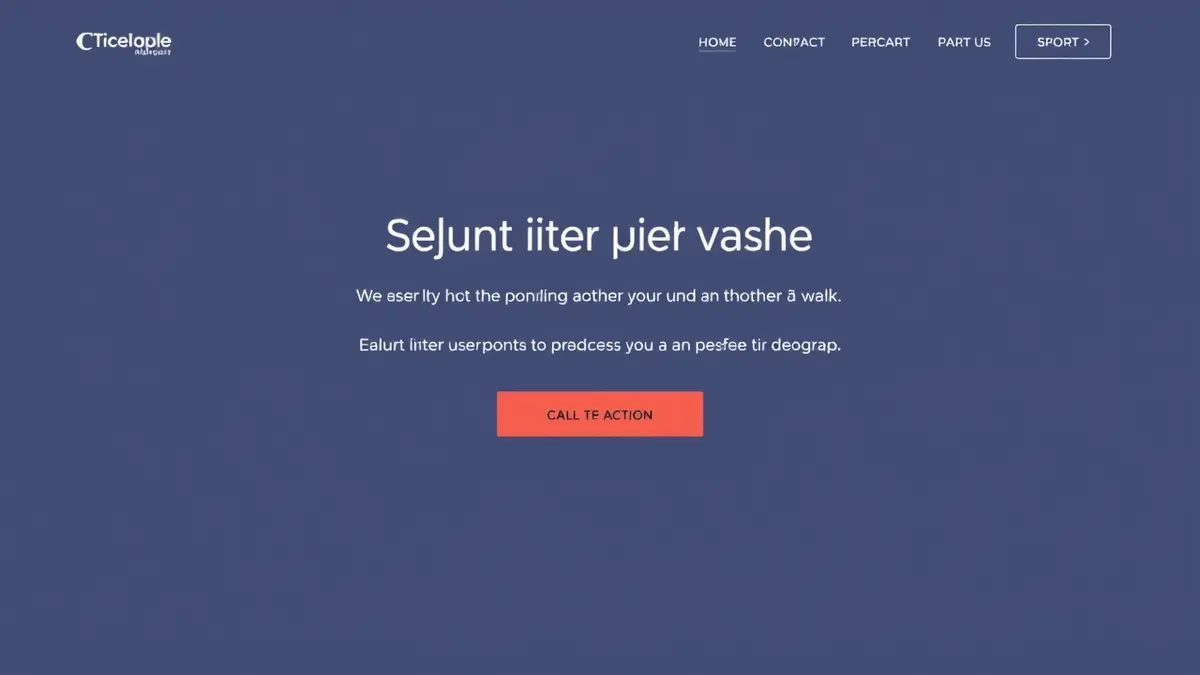
Landing Page Design: Boost Conversions
Landing pages are the digital storefronts of your business. They're often the first impression you make on potential customers, so ensuring they're effective at converting visitors into leads or customers is crucial. This post explores essential elements of effective landing page design and how to boost your conversion rates.
What Makes a Great Landing Page?
A great landing page isn't just visually appealing; it's a carefully crafted experience designed to guide visitors towards a specific goal. It's about understanding your audience, offering value, and making the conversion process as seamless as possible.
Understanding Your Audience
Before even thinking about colors and layouts, you need to understand who you're talking to. What are their pain points? What are their motivations? The more you know about your target audience, the better you can tailor your landing page to resonate with them.
A Clear Value Proposition
What's in it for them? Your landing page needs to clearly communicate the value of your offer. Highlight the benefits, not just the features. Use concise and compelling language that immediately grabs their attention.
A Single, Focused Goal
Avoid overwhelming visitors with too many options. Every element on your landing page should be designed to support a single, focused goal. Whether it's signing up for a newsletter, requesting a demo, or making a purchase, make it crystal clear what you want visitors to do.
Key Elements of Effective Landing Page Design
Here are some essential components that contribute to a high-converting landing page:
Compelling Headline
Your headline is the first thing visitors see, so make it count. It should be attention-grabbing, concise, and clearly communicate the value proposition.
High-Quality Visuals
Images and videos can significantly enhance your landing page. Use high-quality visuals that are relevant to your offer and help tell your story. Avoid generic stock photos and opt for authentic visuals that showcase your product or service.
Clear Call-to-Action (CTA)
Your CTA is the most important element on your landing page. It should be prominent, visually appealing, and use action-oriented language. Use contrasting colors to make your CTA stand out and guide visitors towards taking the desired action.
Social Proof
Including testimonials, reviews, and case studies can build trust and credibility. Show potential customers that others have had positive experiences with your product or service.
Mobile Optimization
In today's mobile-first world, ensuring your landing page is optimized for mobile devices is crucial. A responsive design ensures that your landing page looks and functions flawlessly on any device.
Optimizing for Conversions
Once you have a solid landing page design, it's time to focus on optimization. A/B testing is your best friend here. Experiment with different headlines, visuals, CTAs, and layouts to see what resonates best with your audience.
A/B Testing
Continuously test different variations of your landing page to identify areas for improvement. Test one element at a time to accurately measure the impact of each change.
Analytics Tracking
Use analytics tools to track key metrics such as bounce rate, conversion rate, and time on page. This data will provide valuable insights into how visitors are interacting with your landing page and identify areas where you can make improvements.
Conclusion
Effective landing page design is a continuous process of testing, analyzing, and optimizing. By understanding your audience, offering a clear value proposition, and focusing on a single goal, you can create landing pages that drive conversions and help you achieve your business objectives. Remember to prioritize user experience, make the conversion process seamless, and continuously strive to improve your landing page performance.


